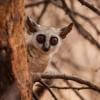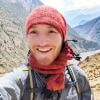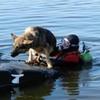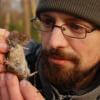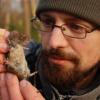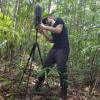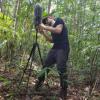Acoustic sensors enable efficient and non-invasive monitoring of a wide range of species, including many that are difficult to monitor in other ways. Although they were initially limited in application scope largely due to cost and hardware constraints, the development of low-cost, open-source models like the Audiomoth in recent years has increased access immensely and opened up new avenues of research. For example, some teams are using them to identify illicit human activities through the detection of associated sounds, like gunshots, vehicles, or chainsaws (e.g. OpenEars).
With this relatively novel dimension of wildlife monitoring rapidly advancing in both marine and terrestrial systems, it is crucial that we identify and share information about the utility and constraints of these sensors to inform efforts. A recent study identified advancements in hardware and machine learning applications, as well as early development of acoustic biodiversity indicators, as factors facilitating progress in the field. In terms of limitations, the authors highlight insufficient reference sound libraries, a lack of open-source audio processing tools, and a need for standardization of survey and analysis protocols. They also stress the importance of collaboration in moving forward, which is precisely what this group will aim to facilitate.
If you're new to acoustic monitoring and want to get up to speed on the basics, check out these beginner's resources and conversations from across the WILDLABS platform:
Three Resources for Beginners:
- Listening to Nature: The Emerging Field of Bioacoustics, Adam Welz
- Ecoacoustics and Biodiversity Monitoring, RSEC Journal
- Monitoring Ecosystems through Sound: The Present and Future of Passive Acoustics, Ella Browning and Rory Gibb
Three Forum Threads for Beginners:
- AudioMoth user guide | Tessa Rhinehart
- Audiomoth and Natterjack Monitoring (UK) | Stuart Newson
- Help with analysing bat recordings from Audiomoth | Carlos Abrahams
Three Tutorials for Beginners:
- "How do I perform automated recordings of bird assemblages?" | Carlos Abrahams, Tech Tutors
- "How do I scale up acoustic surveys with Audiomoths and automated processing?" | Tessa Rhinehart, Tech Tutors
- Acoustic Monitoring | David Watson, Ruby Lee, Andy Hill, and Dimitri Ponirakis, Virtual Meetups
Want to know more about acoustic monitoring and learn from experts in the WILDLABS community? Jump into the discussion in our Acoustic Monitoring group!
Header image: Carly Batist
No showcases have been added to this group yet.
- @diyaquanauts
- | he / him
Digital nomad, software developer, running mechatronic engineering firm in Seychelles to assist ocean conservation groups.

- 0 Resources
- 10 Discussions
- 9 Groups
- 0 Resources
- 0 Discussions
- 8 Groups
University of Adelaide

- 0 Resources
- 10 Discussions
- 17 Groups
- @pbull
- | he/him
DrivenData
Engineer and AI for Good leader working on bringing machine learning tools to social impact organizations.

- 0 Resources
- 1 Discussions
- 8 Groups
- 0 Resources
- 0 Discussions
- 4 Groups
- @ronanwallace
- | He/Him
Research scientist developing conservation technology in environmental monitoring and cultural preservation.
- 0 Resources
- 0 Discussions
- 5 Groups
- 0 Resources
- 0 Discussions
- 1 Groups
- 0 Resources
- 0 Discussions
- 6 Groups
TerrOïko
I am an ecological data engineer at Terroïko, where I work on OCAPI, a platform for semi-automatic camtrap data annotation, biodiversity data interoperability and biodiversity indicators.


- 0 Resources
- 10 Discussions
- 6 Groups
- @shana
- | she/her
I am a Senior Research Scientist in the Department of Human Centered Design and Engineering at the University of Washington. I am a researcher with the eDNA Collaborative and Co-Director of the Pacific Marine Energy Center.

- 2 Resources
- 2 Discussions
- 8 Groups
- @douggillespie
- | he/his
University of St Andrews
PAMGuard software developer
- 0 Resources
- 3 Discussions
- 5 Groups
- @catwasp
- | She/her
- 0 Resources
- 0 Discussions
- 19 Groups
Are you ready for this year's #Tech4Wildlife Photo Challenge? In anticipation, we're counting down our ten favourite entries from last year. Do you think you can top these?
1 March 2017
The Conservation Leadership Programme (CLP) is a training and capacity building programme that targets individuals from developing countries who are early in their conservation career and demonstrate leadership...
21 November 2016
Do you work on conserving Neotropical migratory birds? Do you need funding? Why not apply for a grant from the U.S. Fish and Wildlife Service through the Neotropical Migratory Bird Conservation Act's grant program? The...
8 November 2016
Caves don't tend to be well-liked ecosystems, being extremely dark, often quite cramped, and slippery. And the creepy-crawlies that live within them can be the stuff of nightmares. Nevertheless, one's attitude towards...
25 July 2016
More than half of all primate species are endangered, including our closest living relative, the chimpanzee. Could Passive Acoustic Monitoring (PAM) be applied to primates as well as it has been for other taxa? In this...
29 June 2016
Since 2013, volunteer citizen scientists taking part in the Norfolk Bat Survey have generated over 1.2 million bat recordings, making this one of the most extensive high-quality datasets for bats collected by citizen...
5 February 2016
New horizon scanning report published this month identifies 15 emerging threats and opportunities for global biodiversity.
3 February 2016
August 2025
event
September 2025
event
October 2025
November 2025
event
February 2023
event
event
January 2023
event
64 Products
Recently updated products
| Description | Activity | Replies | Groups | Updated |
|---|---|---|---|---|
| I didn't see this post until the digest came out, but if you still need some comments... I suggest asking this question on one of the sound recordists forums. The... |
|
Acoustics | 4 years 3 months ago | |
| Hi all, The UK Acoustics Network's Bioacoustics special interest group is hosting a monthly webinar series starting this month (... |
|
Acoustics | 4 years 4 months ago | |
| I'm assuming that by "sort by frequencies" you mean the frequency of the call itself, not the frequency of the audio recording (for example, a call at 1KHz vs a... |
|
Acoustics | 4 years 4 months ago | |
| Hi everyone, we’ve decided to extend the survey for 3 more weeks, until the 18th of April! That will be the final date (the online survey tool we use is not free,... |
|
Acoustics | 4 years 4 months ago | |
| Ah, perfect. I was wondering why I never hear those calls! That's really nice work, thanks so much for sharing! |
|
Acoustics | 4 years 6 months ago | |
| The BTO Acoustic Pipeline, to support the sound identification of bats, and other species groups that are recorded as ‘by-catch... |
|
Acoustics | 4 years 6 months ago | |
| Awesome tools are out there for bioacoustic monitoring - so jazzed about the growing acoustic community! Here's another... |
|
Acoustics | 4 years 6 months ago | |
| Hi all thanks for the answers! Carly - thanks, will have to try yours. I did the course at the Organisation of Tropical Studies with Marcelo, which was awesome, but this is not... |
|
Acoustics | 4 years 7 months ago | |
| Tom Dally at Leeds University UK is doing work in this area. I dont think he has anything published yet but his preliminary results are interesting (saw them at a workshop).... |
|
Acoustics | 4 years 7 months ago | |
| Hi @pmnguyen1224 , thanks for reaching out and checking out the system! We would love to help ensure that you're able to get pattern matching to work for... |
|
Acoustics, AI for Conservation | 4 years 7 months ago | |
| I’ll stick some thoughts here that other folk can maybe comment on/add to. So there are a few (obvious) differences between terrestrial and marine... |
|
Acoustics | 4 years 8 months ago | |
| Hi Steph! It could be either - if there was anyone out there for whom this work would be a good fit for their current role, then that would be easy, but if they needed... |
|
Acoustics | 4 years 9 months ago |




